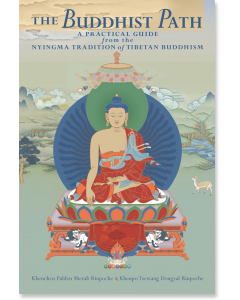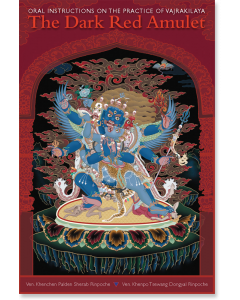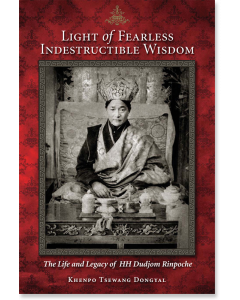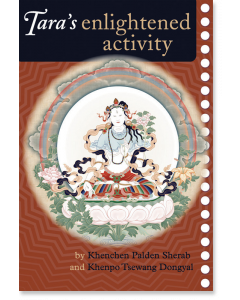See Also: Dudjom Tersar | Longchen Nyingtig | Namcho & Palyul
___________________
Guru Rinpoche | Mandarava | Rongzompa | Longchenpa | Jigme Lingpa | Patrul Rinpoche |
Sera Khandro | Mipham Rinpoche | Dilgo Khyentse | Dudjom Rinpoche
Khenpo Tsewang Dongyal, along with Khenchen Palden Sherab, is a founder and director of Padmasambhava Buddhist Center based at Padma Samye Ling in upstate New York. PBC is a worldwide Buddhist meditation and study network that includes local centers as well as retreat centers and monastic institutions.
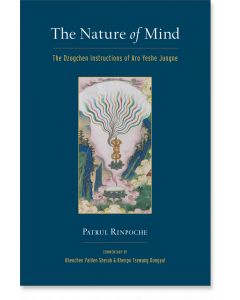
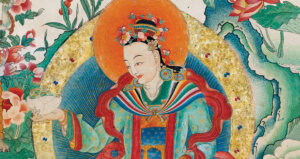
Yeshe Tsogyal: A Guide for Readers to the Dakini Princess

See Also: Dudjom Tersar | Longchen Nyingtig | Namcho & Palyul
___________________
Guru Rinpoche | Mandarava | Rongzompa | Longchenpa | Jigme Lingpa | Patrul Rinpoche |
Sera Khandro | Mipham Rinpoche | Dilgo Khyentse | Dudjom Rinpoche
The first Tibetan ever to attain complete enlightenment was in all probability the woman Yeshe Tsogyal, closest disciple of Padmasambhava, the master who introduced the Buddhist teachings to Tibet in the eighth century. The first three books below are not just biographies—and very different from each other both in emphasis as well as some of the events accounted for—but inspiring examples of how Buddha’s teaching may be practiced. Although these texts are of great antiquity, they nevertheless expresses a tradition that is still alive today and is an archetypal description of the teacher-disciple relationship. Yeshe Tsogyal follows the complete Buddhist path, including the Dzogchen teachings, and herself becomes a Guru of great power and wisdom. Passages of profound teachings are offset by episodes of exploit and adventure, spiritual endeavor, court intrigue, and personal encounter. Hers is a dramatic story, full of beauty and song, and offers an intimate glimpse of Tsogyal’s feelings, aspirations, hardships, and triumphs.
$24.95 - Paperback
By Yeshe Tsogyal, Namkhai Nyingpo, and Gyalwa Changchub
Foreword by Jigme Khyentse Rinpoche
Translated by The Padmakara Translation Group
Lady of the Lotus-Born is a terma, or Dharma Treasure, written and concealed in the eighth century for future generations by the accomplished masters Namkhai Nyingpo and Gyalwa Changchub, the disciples of Padmasambhava and Yeshe Tsogyal. The text was discovered nearly a thousand years later in the seventeenth century by the Tertön (Dharma Treasure finder) Taksham Samten Lingpa, who, by interpreting the symbolic script of the dakinis (reproduced at the beginning of each chapter), revealed the text in its entirety as it has been handed down to us.
$24.95 - Paperback
By Yeshe Tsogyal, rediscovered by Drime Kunga and Jamyang Khyentse Wangpo, and translated by Chonyi Drolma
Foreword by Dzongsar Khyentse Rinpoche
The many layers of the heroic life of Yeshé Tsogyal, Tibet’s best-known dakini and female master, are revealed in this inspiring work. Translated here for the first time, this terma, or “hidden treasure,” presents an outer narrative of her birth, family, and struggles in a traditional male-dominated society; an inner account of her meetings with the great master Padmasambhava; and a secret chronicle of her retreat at Chimpu and her visionary journey to Oddiyana. This accomplished translation is enriched by the refreshing insights of six contemporary scholars and teachers of Tibetan Buddhism, making this invaluable guide to the life of Yeshé Tsogyal a treasure for practitioners, scholars, and anyone intent on the possibility of awakening.
You can read a piece from the book Judith Simmer-Brown wrote here.
By Taksham Nuden Dorje, translated by Keith Dowman
Foreword by Thinley Norbu Rinpoche
Another terma text is this extraordinary work, discovered by Taksham Nuden Dorje n the seventeenth century.
An Thinley Norbu Rinpoche says in the foreword,
Those who read the biography of the supreme tantric master, Padma Sambhava, and his Consort, Yeshe Tsogyal, have the chance to identify with them, and those who cultivate the inner wisdom Dakini:, the root Dakini:, progress towards becoming the supreme Sky Dancer, incomprehensible feminine wisdom,
the lover without motive.
and
In the dharmakaya's stainless space Yeshe Tsogyel is Kuntuzangmo, infinite and noble femininity itself. These names and qualities are no more than
indications of the nature of the dharmakaya which can never be contained in, or identified by, concepts. Sambhogakaya is the
glowing awareness of the dharmakaya, where the Five Buddhas and their Consorts appear as unobstructed luminous space-form. As the feminine aspect in the sambhogakaya, Yeshe Tsogyal is the Five Wisdom-Consorts.
$24.95 - Paperback
by Nyoshul Khen Rinpoche
Translated and introduced by David Christiansen
Nyoshul Khen Rinpoche was one of the most important teachers of the 20th century - an important teacher to some of the best living teachers. In the pages of this book, Yeshe Tsogyal appears throughout. Here is one section:
At present we are practicing the meditation deity in the form of the dakini, from the terma treasure teachings of the second Dudjom Rinpoche, Jigdral Yeshe Dorje (1904–87). It is a teaching that has been revealed specifically for the benefit of beings in this dark age. This practice stems from the compassion of the three jewels and the blessings and aspirations of the buddhas and is an actual method to accomplish Guru Padmasambhava’s consort Yeshe Tsogyal. The dakini Yeshe Tsogyal is the nirmanakaya emanation of dharmadhatu Samantabhadri, the consort of the dharmakaya buddha Samantabhadra, who is the female aspect of the ultimate deity (don gyi lha).
In order to help us realize this state for ourselves, through the power, blessings, and aspirations of Buddha Samantabhadra and consort, the dakini Yeshe Tsogyal arises as their actual manifestation and is born into this world. Yeshe Tsogyal was blessed and taught by Guru Padmasambhava and as part of her various enlightened activities, she wrote down and transmitted a method to follow her and accomplish the essence of her awareness wisdom (rig pa’i ye shes kyi ngo bo). Thus we have the practice of Yeshe Tsogyal as a yidam or meditation deity.
$28.95 - Paperback
To call Cascading Waterfall a book on the preliminary practices is a bit like calling the Mt. Everest a hill. Coming from the vast wisdom mind of Longchenpa's emanation in our age, it is an indespensible guide to the path. And Yeshe Tsogyal, who Rinpoche describes as Kuntuzangmo appearing in form, appears throughout.
Rinpoche includes a translation of Mipham Rinpoche's prayer to Yeshe Tsogyal, The Longing Melody of Faith.
And the second part of the book is a commentary on the meaning of “The Continuously Blossoming Rosary of the Lotus Assembly Palace” called The Light Rays of the Youthful Sun and Rinpoche offers us many teachings on the Great Exaltation Queen Yeshe Tsogyal who features in the prayer.
$24.95 - Paperback
By Namtrul Jigme Phuntsok and Khandro Tare Lhamo
Introduced and translated by Holly Gayley
Namtrul Jigme Phuntsok and Khandro Tare Lhamo were an extraordinary 20th century terton visionaries as the translations of love letters. Tare Lhamo is widely considered an emanation of Yeshe Tsogyal and this connection appears throughout Gayley's introduction as well as the letters themselves.
The letters are poetic, affectionate, and prophetic, articulating a hopeful vision of renewal that drew on their past lives together and led to their twenty-year partnership. This couple played a significant role in restoring Buddhism in the region of Golok once China’s revolutionary fervor gave way to reform.
$34.95 - Paperback
By Khenpo Tsewang Dongyal
This biography of Dudjom Rinpoche references Yeshe Tsogyal throughout. It includes the Seventh Heap of Lightbeams which a brief explanation of Kyabje Rinpoche’s enthronement as a great tertön and regent of Guru Padmasambhava and of how Guru Rinpoche and wisdom dakini Yeshe Tsogyal entrusted him with terma. Kenpo Tsewang also shares how in some terms teachings terma teachings it says that Guru Padmasambhava and Yeshe Tsogyal reincarnated together in the form of His Holiness Dudjom Rinpoche, so that he was their actual presence—only the body was different.
$39.95 - Paperback
This is a classic of scholarship on the Dakini principle from the point of view of a practitioner. Yeshe Togyal is discussed and referenced throughout. Here is a sample:
As for her inner dimension, Yeshe Tsogyal was remarkable because she was not merely a mortal; in her dynamic nature she was a tantric Buddhist meditational deity. She is called Sarasvati (Yangchenma), the great female bodhisattva of learning, culture, and music, the peaceful consort of Manjusri, who carries a lute that serves as her symbol. Sarasvati is also called Vakisvari, (Ngawang Lhamo) or ‘‘lady of speech’’ for her connection with seed syllables, music, utterance, and poetry. She is the dakini of the mirrorlike wisdom, and the ‘‘white-cloaked lady’’ (Ko Karmo) who is dakini of inner heat in the yogic practice of tummo. It is said that Yeshe Tsogyal was Sarasvati in her previous life.
Yeshe Tsogyal in her visionary dimension was the radiant White Tara (Drolma Karmo) the savior who, with her compassionate seven eyes, attends to the health and welfare of beings in all quarters. In another manifestation, she was Vajrayogini or Vajravarahi, who are two aspects of the most important dakini in the Tibetan tantric system. Vajrayogini is a semiwrathful deity, depicted as red and dancing, wearing bone ornaments; she is the most expressive of the qualities of wakefulness, the personification
of the widsom-mind itself. In her alternate identity as Vajravarahi she is the ‘‘Vajra Sow,’’ the manifestation of the nonconceptual quality of the mind, who severs thought with her hooked knife

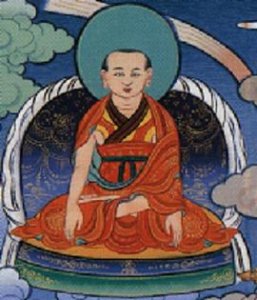
Patrul Rinpoche: A Reader's Guide

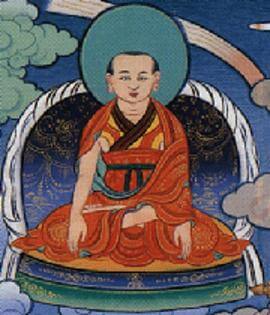
Outwardly, you are the Son of the Victorious Ones, Shantideva.
Inwardly, you are the saint, the conqueror Shavaripa.
Secretly, you are the supreme sublime being Dug-ngal Rangdröl, actual self-liberator of the suffering of beings.
Jigme Chökyi Wangpo, I pray to you.
— by Jamyang Khyentse Wangpo, from Thinley Norbu Rinpoche's Sunlight Speech That Dispels the Darkness of Doubt
Eastern Tibet in the nineteenth century was teeming with some of the most remarkable teachers to have walked on this earth.
Standing vividly out among them was Dza Patrul Orgyen Jigme Chökyi Wangpo, commonly known to us as Patrul Rinpoche. Considered one of the three main incarnations of Jigme Lingpa, the impact that this wandering yogi made on Buddhist practice cannot be overstated.
Biographical sketches of him can be found in Tulku Thondup's Masters of Meditation and Miracles, Khenpo Kunpel's A Vase of Nectar to Inspire the Faithful: A Biography of Patrul Rinpoche, Nyoshul Khen Rinpoche's A Marvelous Garland of Gems, Alak Zenkar Rinpoche's brief biography on Lotsawa House, and as several of the works listed below.
But perhaps the best place to start is in Matthieu Ricard's Enlightened Vagabond: The Life and Teachings of Patrul Rinpoche. Ricard has spent his life with some of the most amazing teachers of the 20th century, many of them heirs to the practice tradition of Patrul Rinpoche and the oral tradition preserving the stories of Patrul Rinpoche, which have been told since his days as a peripatetic wandering in the hills and mountains of eastern Tibet. This book is filled with stories and teachings that will make you laugh and cry and leave you in awe. It is an essential book for those inspired by Patrul Rinpoche's life, works, and wisdom.
What follows is a guide for readers to many of the works available in English by Patrul Rinpoche.
The Words of My Perfect Teacher, or Kunzang Lama'i Shelung, must be one of the most influential works to come out of Tibet. For westerners, the translations, first by Sonam Kazi and then later by the Padmakara Translation Group, have been instrumental in our Buddhist education. In this work Patrul Rinpoche puts to paper a long oral tradition on the preliminary or foundational practices, from the Four Thoughts that turn the mind to Dharma to refuge, bodhicitta, mandala offerings, purification relying on Vajrasattva, and Guru Yoga. It is full of stories that drive the points home in a way that go right to the reader's heart. Lamas have said that this book has a particular quality that rereading it nearly always gives the reader a new discovery. And revisiting it again and again is how it is meant to be used—this is not a work to check the box that you have read it, but for it to become part of the one studying it.
And to go even deeper with it, Kathog Khenpo Ngawang Pelzang, who received it in his youth from Patrul Rinpoche's heart disciple Lungtok Tenpai Nyima, wrote his Zintri, or notes, that form The Guide to the Words of My Perfect Teacher. This work presents the background for the teachings of the main work. For example Patrul Rinpoche's chapter on the Three Jewels corresponds to this work's in-depth exposition on the finer points of the Three Jewels and Patrul Rinpoche's chapter on the mandala offering is complemented by Khenpo's chapter on Buddhist cosmology. Together these two works provide a multi-faceted overview of how to practice.
While Patrul Rinpoche is famed as a Dzogchen yogi, at the core of his practice was the Mahayana ideal of the bodhisattva, a path he truly lived. It is said that Patrul Rinpoche traveled alone, carrying two texts with him. The first was The Way of the Bodhisattva. The second was Nagarjuna's Root Stanzas of the Middle Way.
While Patrul Rinpoche did not compose a work on the Way of the Bodhisattva, he taught it constantly, over one hundred times from beginning to end. It had fallen into disuse outside a few monastic centers, and it is thanks to Patrul Rinpoche this text became integral to all the schools of Tibetan Buddhism. Luckily for us, one of his most dedicated students, Khenpo Kunzang Pelden or Khenpo Kunpel, compiled these teachings he received from Patrul Rinpoche and composed The Nectar of Manjusri's Speech: A Detailed Commentary on Shantideva's Way of the Bodhisattva.
Patrul Rinpoche, also imparted teachings to Mipham Rinpoche, who based his understanding on these when he wrote his commentary on the famous (and famously challenging) ninth chapter of The Way of the Bodhisattva, now translated as The Wisdom Chapter.
On the Abhisamayālaṃkāra, one of the Five Maitreya Texts imparted to Asanga by Maitreya himself, Patrul Rinpoche wrote seven texts, the main two of which are The General Topics on the Abhisamayālaṃkāra and A Word Commentary on the Abhisamayālaṃkāra. What will be surprising for some, the bulk of these two works are, in the honored Tibetan tradition of honoring the words of past masters, is almost entirely excerpts from Tsongkhapa's commentary on the text, The Golden Garland of Explanations.
A distillation (if a 900 page work can be called that) of Patrul Rinpoche's works on this text, are what forms the bulk of Groundless Paths: The Prajñāpāramitā Sūtras, The Ornament of Clear Realization, and Its Commentaries in the Tibetan Nyingma Tradition
Watch scholar and translator Karl Brunnholzl discuss the trilogy of commentaries on Prajaparamita, of which Groundless Paths, heavily focused on Patrul Rinpoche, is the third volume.
The Speech Virtuous in the Beginning, Middle, and End, one of the most influential works of Patrul Rinpoche, is included is included in whole or in part in several books. Patrul Rinpoche wrote this while staying in a remote cave not far from the Tibetan-Chinese border. In this work, be pulls the rug from under our normal way of being, so full of deceit and hypocrisy. He concludes that only by turning away from an ordinary life and pursuing the path of Buddhism. He then outlines the preliminary practices, the development and completion stages of tantric practice, and finally the practices of Mahamudra and Dzogchen. This text is full of the wisdom, humor, and directness that characterize all of Patrul Rinpoche's works, but it is unique in that it is meant to be memorized, making its message easy to bring right into our hearts.
In the accompanying commentary to Patrul Rinpoche's root text, Dilgo Khyentse Rinpoche (1910–1991)—lineage holder of the Nyingma school and one of the great expounders of the Dharma in Europe and North America—expands upon the text with his characteristic compassion and uncompromising thoroughness. Patrul Rinpoche's fresh and piercing verses combined with Khyentse Rinpoche's down-to-earth comments offer a concise yet complete examination of the Buddhist path.
Another superb translation of the root text of Patrul Rinpoche's The Practice of the View, Meditation, and Action, Called “The Sublime Heart Jewel”, The Speech Virtuous in the Beginning, Middle, and End is included in Thinley Norbu Rinpoche's collection of translations entitled Sunlight Speech That Dispels the Darkness of Doubt. This text presents advice to practitioners on the path to enlightenment, which is all contained in the three aspects of the correct view, meditation, and action, synthesized in the practice of the Six-Syllable Mantra of Avalokiteshvara.
Two poems of Patrul Rinpoche are included in what in the mind of your author here is one of the most extraordinary anthologies of Tibetan Buddhism: Straight from the Heart: Buddhist Pith Instructions.
The first poem is an excerpt from Speech That Is Virtuous (see the entry from Sunlight Speech in this article) and the translator has titled it Afflictions Are Wisdom, the Skandhas Are Avalokitesvara. The second is The Crucial Point of Practice.
Thinley Norbu Rinpoche also quotes this at length in Sole Panacea: A Brief Commentary on the Seven-Line Prayer to Guru Rinpoche That Cures the Suffering of the Sickness of Karma and Defilement.
Patrul Rinpoche wrote multiple works on tantric practice, several of which have been translated into English.
Patrul Rinpoche wrote two extremely helpful texts on generation stage practice which are included in Deity, Mantra, and Wisdom.
The first is Clarifying the Difficult Points in the Development Stage and Deity Yoga and is meant to be a companion piece to Jigme Lingpa's Ladder to Akanishta which accompanies it in this volume. As the translators explain, "Expanding on the presentation given in Ladder to Akaniṣṭha, he highlights some of the more obscure issues addressed by Jigme Lingpa and clarifies the latter’s presentation. In addition to his clarification of difficult issues, Patrul also stresses the importance of compassion and the view of emptiness in the context of tantric practice."
The second text by Patrul Rinpoche in this volume is The Melody of Brahma Reveling in the Three Realms: Key Points for Meditating on The Four Stakes That Bind the Life-Force. These Four Stakes are absorption, essence mantra, unchanging realization, and projection and absorption. Patrul Rinpoche lists they key points associated with each of the four. Together, they form an essential framework in development stage practice according to the Nyingma tradition.
Hear Dharmachakra Translation Committee member Andreas Doctor discuss this book, its background and their teacher Chokyi Nyima Rinpoche's encouragement to bring this important work to a western readership.
These Four Stakes discussed above, central as they are to the Nyingma tradition, are unsurprisingly essential in the Lonchen Nyingtik lineage. The the main lama practice is the Rigdzin Düpa, or Gathering of the Vidydharas, a practice centered on Guru Rinpoche Padmasmbhava and other awareness holders. One of the translations of this volume is by Khangsar Tenpe Wangchuk which is a commentary on Patrul Rinpoche's Melody of Brhama discussed above, and Padmasambhava'a Garland of Views.
The following text in the volume is a short one authored by Patrul Rinpoche himself, and is titled A Clearly Reflecting Mirror: Chöpön Activities for the Rigdzin Düpa, the Inner Sadhana of the Longchen Nyingtik Cycle. This is a ritual manual for a multi-day drupchö intensive practice. It covers arranging the mandala, the Rigdzin Düpa torma, Fulfillment-and-Confession torma, the Dharmapala tormas, additional offerings, various offering activities for the attendants, tsok, remainders, Dharmapala practice, the horse dance, offerings, and prayers for auspiciousness.
Hear Matthieu Ricard discuss Patrul Rinpoche's advice on meditative progress and experiences
All of Patrul Rinpoche's works regardless of the subject are imbued with the view of Dzogchen. However, he authored many works explicitly on this system of practice.
One of Patrul Rinpoche's most famous Dzogchen texts is The Three Words That Strike the Vital Point, itself based on a short work by the early Dzogchen master Garab Dorje which he had imparted to Manjusrimitra. This text, along with a commentary by Dilgo Khyentse Rinpoche is included in Primordial Purity. This work is an overview of the view, meditation, and action of Dzogchen. As Khyentse Rinpoche explains, these are not ordinary teaching:
"If you practice accordingly, you cannot help but be liberated. It will not be enough, however, just to practice for one or two days. In such a short time, we cannot break through our confusion. Even though you cannot spend your whole life continuously practicing in solitary retreat, please do as much practice as you can every day. As it is said, 'A collection of drops can become an ocean.' Since the teaching becomes more and more profound through continuous practice, confusion will naturally be purified, and all good qualities will spontaneously unfold. Those are the key instructions of the gurus of the three lineages."
The Nature of Mind: The Dzogchen Instructions of Aro Yeshe Jungne is a commentary on a fascinating text by Patrul Rinpoche by the Khenpo brothers Palden Sherab and Tsewang Dongyal. It is centered around a translation of Patrul Rinpoche's Clear Elucidation of True Nature: An Esoteric Instruction on the Sublime Approach of Ati. This text Patrul put together to encapsulate all the teachings from the Aro tradition in a single short text. It is a pithy guide to discovering the nature of your own mind and gives explicit instructions on how to do so for those of us of superior, middling, and lesser capabilities. It is superb.
Beyond the Ordinary Mind, an extraordinary collection of profound advice on Dzogchen from many great masters, compiled and translated Adam Pearcey, the force behind Lotsawa House. The piece by Patrul Rinpoche is called Uniting Outer and Inner Solitude: Advice for Alak Dongak Gyatso. Alak Dongak Gyatso was a student of Patrul Rinpoche and Pearcey tells a few stories about this somewhat elusive figure who was on the losing end of the stick in a debate with Mipham Rinpoche and writes that this work,
"is more than just a poem of advice on the importance of remaining in solitude. It offers Patrul Rinpoche’s views on a subject close to his own heart: he spent most of his life in retreat and even wrote this text while residing in 'the mountain solitude of Dhichung.' But it is also one of the few surviving textual clues to the mysterious life of Alak Dongak. And if we read it as a moving attempt to console a dear but despondent disciple, then it has a further dimension, as an encouragement to respond to an ordinary human situation by transcending ordinary human limitations."
The Golden Letters: The Tibetan Teachings of Garab Dorje, First Dzogchen Master includes a work by Patrul Rinpoche entitled The Special Teaching of the Wise and Glorious King, a four page poem followed by a more extensive auto-commentary.
His Holiness teaches on Patrul Rinpoche's commentary to Garab Dorje's famous Three Words That Strike the Vital Point, also using other texts such as Longchenpa's Cho Ying Dzod, or Treasury of Dharmadhatu. His Holiness says,
Fundamentally, no matter who we are, whether we meditate or not, the self-arising wisdom of rigpa is already primordially present, and we have never strayed from it. Then there is rigpa as it is directly introduced to us by a master, on the basis of our personal practice. The nature of rigpa in both cases is identical—it is uncontrived rigpa—but in the one case it is simply so, without having been directly introduced, while in the other case we are recognizing our true nature for what it is. So one can talk about rigpa in two ways. But actually, there are not two things, one reuniting and another being reunited. The direct introduction to what is naturally present as the ground of being is metaphorically called “reuniting mother and child.
The first section of this book is a translation of a four page poem by Patrul Rinpoche addresses to the adept Abushri. It is a beautiful piece of advice that cannot fail to move the reader.
Patrul Rinpoche wrote a short work called Chase Them Away! which was translated by Herbert Guenther. This is included in the anthology The Buddha and His Teachings. It appears this work was written when he was an old man as it is a reflection of his life, looking back and telling us "like it is". It reflects the wisdom from a life dedicated to practice and benefiting others. Here is one of the verses:
When first I saw wealth,
I had the feeling of momentary joy
Like a child gathering flowers:
That's what is meant by not hoarding riches and wealth.
When later I saw wealth,
I had the feeling of there never being enough
Like water being poured into a pot with a broken bottom:
That's what is meant by making small efforts to gain something.
When now I see wealth,
I have the feeling of its being a heavy burden
Like an old beggar with too many children:
That's what is meant by rejoicing in having nothing.
There are three excellent sources for more on Patrul Rinpoche.

![]() The Treasury of Lives also has a biography of Patrul Rinpoche among its collection of Tibetan figures.
The Treasury of Lives also has a biography of Patrul Rinpoche among its collection of Tibetan figures.
And for Tibetan readers, TBRC/BDRC of course provides downloadable pdfs of Patrul Rinpoche's works in Tibetan.
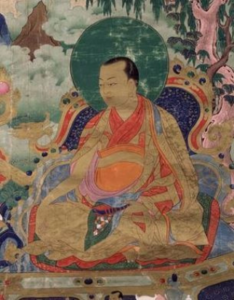
A Readers Guide to the Sakya Master Chogyal Phagpa
Related Reader's Guides
Guide to the Sakya Tradition
Guides to Other Important Sakya Figures: Sakya Pandita | Sakyasribhadra
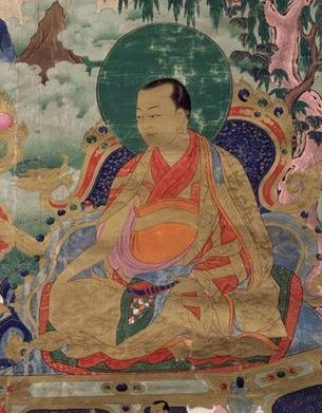
Drogon Chogyal Phagpa Lodro Gyaltsen (1235-1280), better known to the world as Chögyal Phagpa (or Phakpa) is one of the five great founding masters from the Sakya tradition in Tibet. In addition to being the nephew of the great 13th century Sakya master, Sakya Pandita, Chogyal Phagpa was appointed ruler of Tibet and eventually became the teacher of the Mongol emperor Kublai Khan. He was well steeped in Dharma training and practice and composed several texts and commentary throughout his lifetime including writing on civil law, the Buddhist tenet system, and lamdre (Path With Its Result), a system of practice specific to the Sakya School of Tibetan Buddhism.
"Once one hears the profound and extensive intimate instruction from the buddhas and bodhisattvas and meditates upon it, since one will be able to traverse to the stage of buddhahood, the transcendent path will not be written here. As such, the practice of yoga through the three purities is the method of achieving the transcendent stage."
-From "The Manual of the Three Purities," by Chögyal Phakpa Lördo Gyaltsen
Chapter 19 of Sakya: The Path with Its Result, Part One
Translated by Malcom Smith
Before going into the various resources in print and online, included below is his biography of Lama Migmar Tseten's Treasures of the Sakya Lineage.
"Drogon Chogyal Phagpa was born amid excellent signs to Sakya Pandita’s younger brother, Zangtsa Sonam Gyaltsen (1184‒1239), and his wife, Machig Kunkyi, during the wood female sheep year, when his father was fifty-two years old. He recalled his past lives as Saton Riwa, Langriwa, and others. Chogyal Phagpa was taught the Saroruhavajra sadhana when he was three, and the Jatakas when he was eight; when he was nine, Sakya Pandita taught him the Hevajra-tantra. To everyone’s amazement, Phagpa gave an explanation of The Advice for Gathering Accumulations (Sambharaparikatha) by master Vasubandhu that same year, and the pride of scholars was diminished when they heard this explanation from a child. Thinking that an ordinary person could not have such wisdom, they considered him to be an Arya. Thus, he became known to all as Phagpa, which means “Arya.”
At nine he traveled north to attend Sakya Pandita. While in Lhasa, Chogyal Phagpa received novice ordination in front of the Jowo statue, and in Kyormo Lung, he received the Getsul vow from Sherab Pal.
He spent all his time attending Sakya Pandita during his travels and residence in China, until at seventeen Chogyal Phagpa left for Mongolia. Sakya Pandita was very pleased with him for having mastered the outer teachings and the inner Vajrayana teachings, and gave him a white conch to proclaim the Dharma and a begging bowl. Having entrusted his students to him, the master said, “The time has come for you to teach, to benefit many sentient beings, and to recall your promise.” Then Sakya Pandita passed away, having accomplished all he had intended to do.
Having been invited by the Mongolian Khan, Phagpa established the Khan’s faith by performing miracles, such as showing each of the five Buddha families separately by cutting open the five limbs of his body with a sharp sword. Beginning with the Khan, Chogyal Phagpa bestowed the empowerment of Hevajra on twenty-five disciples and brought Vajrayana to the kingdom of Mongolia. The Khan gave Chogyal Phagpa the title of Tishri and thirteen surrounding regions of Tibet as his offering for the empowerment.
At twenty-one, Chogyal Phagpa received full ordination on the border of China and Mongolia from the abbot of Nyethang, Dragpa Senge; the master of ceremonies was Jodan Sonam Gyaltsen. Phagpa received teachings on Abhisamayalankara and other texts from the abbot and on Vinaya from the master of ceremonies.
Two years later, he accepted an invitation to the five-peaked mountain and received many teachings on Yamari from Tong Ton. After that, he returned to the Khan’s palace, and when a Dharma assembly was convened, he defeated twenty-three Chinese teachers in debates and showed them correct view.
When he was thirty, he returned to the seat of Sakya, having been absent from Tibet since he was nine. He gave many teachings there; he also received many teachings on the outer and inner sciences and an ocean of transmissions and instructions from Nyan Wod Srung, the siddha Yontan Pal, Chim Namkhai Drag, Tsog Gom Kunga Pal, Lowo Lotsawa, Chiwo Lheypa Jowo Sey, and others.
After this, he was again summoned to China by the Khan and arrived there when he was thirty-three. He appointed thirteen positions to manage different responsibilities and was offered the rest of the three provinces of Tibet as an offering for empowerments.
At forty-two, having been in China the second time for nine years, he returned to Sakya. He taught a large Dharma festival and used all of his wealth for this event, holding nothing back. He established the basis for a Dharma college and built shrines for the body, speech, and mind of the Buddhas. He gave donations to all the poor people of the region and demonstrated only positive activities toward sentient beings. He spread the Dharma to Tibet, China, and Mongolia; ordained 450,000 novices and fully ordained monks; and bestowed Vajrayana empowerments on people of fourteen different languages. Moreover, he established countless disciples in ripening and liberation through the blessings of transmission and instruction. He gave commentaries on sutras, treatises, and the stages of practice in Hinayana and Mahayana; answered questions; and wrote many texts that are easy to understand.
In the early morning of the eleventh month of the iron male dragon year, when he was forty-six, having endeavored greatly to benefit others, Chogyal Phagpa sat cross-legged, holding his vajra and bell. He crossed his arms, and amid sounds, amazing scents, and a shower of flowers, he passed away.
Chogyal Phagpa was the last of the five founding masters of the Sakya school. Thanks to his efforts, the school ruled Tibet for close to a century; expanded widely; and became the country’s dominant institution of learning for the next two hundred years, producing the most famous scholars in Tibetan history, such as Buton, Dolbuwa, Longchenpa, Rendawa, Tagtsang Lotsawa, Tsongkhapa and his two chief disciples, Rongton, Dagpo Tashi Namgyal, Gorampa, and Shakya Chogden.
Of the five masters, Sachen was considered to be the emanation of Avalokiteshvara; Lopon Rinpoche, Jetsun Rinpoche, and Sapan were regarded as emanations of Manjushri; and Chogyal Phagpa was considered to be an emanation of Vajrapani."
Another excellent biographical source is Thinley Norbu Rinpoche's Ruby Rosary. Chogyal Phakpa was one of the primary incarnations of the Dudjom lineage of the Nyingma tradition. Here is a selection from the biography included:
Drogön Chögyal Phagpa Lodrö Gyaltsen Rinpoche [1235–1280] had the good fortune to be born as the son of Zangtsa Sönam Gyaltsen. He was a Bodhisattva abiding on the higher bhūmis340 who intentionally took rebirth in the human realm. As a result, from the beginning his nature, love, and Bodhisattva conduct were exceptional, and he was adorned with the title Phagpa.341 The inexhaustible treasury of his intelligence and liberating confidence burst open and overflowed. He performed miraculous activities, such as slicing off his head and four limbs with a sharp blade and transforming them into the arrangement of the five Buddha families. This and his perfect deeds of enlightened body, speech, and mind caused unswerving faith to be born in the hostile Mongolian king [Kublai Khan], who went on to receive empowerment from him on three occassions.
A shorter but complementary biography appears in Ringu Tulku's The Ri-Me Philosophy of Jamgön Kongtrul the Great.
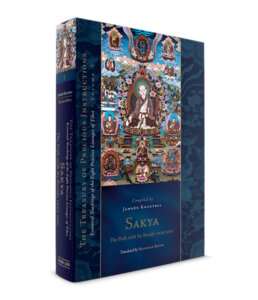
Volume 5 includes Chögyal Phagpa's The Manual of the Three Purities: The Intention of the Vajrapañjara Tantra. Below is the introduction to his text found in Volume 5 translated by Malcolm Smith.
"The last text presented in this volume was composed by Drogön Chögyal Phakpa (’Gro dgon chos rgyal ’phags pa, 1235–1280), the seventh Sakya throne holder, the fifth of the Sakya founders, and notably the nephew of Sakya Paṇḍita (Sa skya paṇḍita Kun dga rgyal mtshan, 1182–1251), one of the most well-known figures in the political history of Tibet due to his relationship with the founder of the Yuan Dynasty of China, Kublai Khan (1216–1294). Although The Manual of the Three Purities does not form part of the usual curriculum of the Path with Its Result, the practices described in its pages are drawn from that system. The three purities, which are also described in texts such as Amezhab’s Opening the Eye to the Concealed, and so on, include the purity of suchness, which examines the view described in the Hevajra cycle of tantras; the individual purity of the deities, which is related to the creation stage; and the purity of intrinsic cognizance, which is based on completion stage practices."
In addition to the main biography above, Treasures of the Sakya Lineage. contains a translation of his short piece of advice, The Gift of the Dharma to Kublai Khan. This text encapsulates all the Hinayana and Mahayana teachings of the Buddha. It begins with a discussion of civil law and then goes to a discussion of Dharma, covering all the topics of the four tenet systems, as well as the ground, path, and fruit, and ends with a brief discussion of the three kayas.
In the Nyingma tradition Chogyal Phagpa continues to be revered as a previous birth of Dudjom Rinpoche.* The previous Dudjom Rinpoche, Jigdral Yeshe Dorje, includes him in the famous Pearl Necklace prayer, a supplication he was asked to compose to his thread of previous lives, that appear in Wisdom Nectar. This is also related, along with a shorty biography, in the Light of Fearless Indestructible Wisdom, the biography of Dudjom Rinpoche by Khenpo Tswang Dongyal.
*To learn more see our Rebirths of the Dudjom Lineage page.
Dzongsar Khyentse Rinpoche in his masterpiece of the Teacher-Disciple relationship, The Guru Drinks Bourbon, recounts this story:
"There is a folktale of a Chinese emperor who never managed to receive proper teachings from Sakya Pandita because he was testing Sakya Pandita again and again. Even though Sakya Pandita proved to be a great master, the emperor’s skeptical habit was ceaseless. Eventually the intended guru, Sakya Pandita, died, and they say that because of this, the people of the Yuan dynasty had to receive the teachings from Sakya Pandita’s nephew, Drogon Chogyal Phakpa.
If you are genuinely seeking the truth, you have to come to a conclusion at some point. Otherwise, like the Chinese emperor, you’ll end up wasting your time. If you keep on analyzing somebody, you will always find faults."
Light of Fearless Indestructible Wisdom
$34.95 - Paperback
By: Dudjom Rinpoche & Khenpo Tsewang Dongyal Rinpoche & Khenpo Tsewang Dongyal
Chogyal Phagpa's legacy extends into the artistic realm as well. The Art of Buddhism tells how he invited the Nepalese artist Aniga along with a group of others to Beijing where they profoundly influenced Chinese Buddhist art from then on.
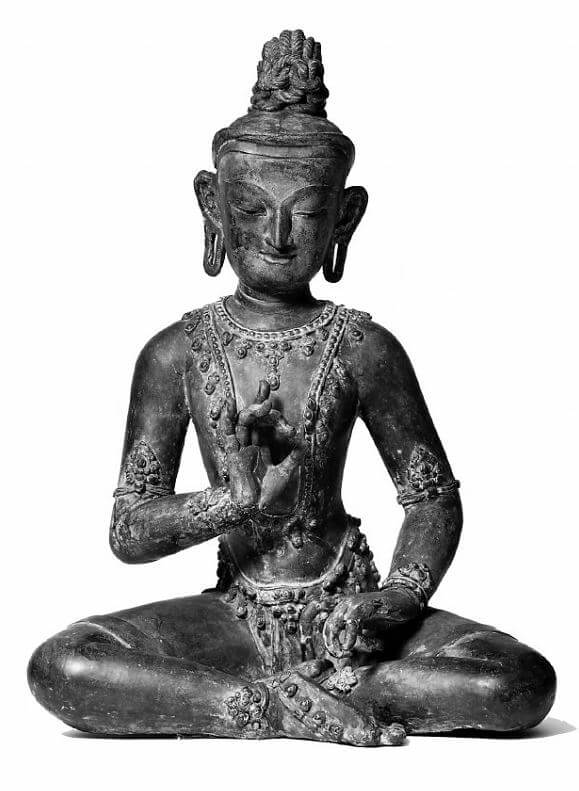
An example of the Nepalese influence on Chinese art that Chogyal Phagpa introduced to the court in China. From The Art of Buddhism.
There are a couple other excellent resources we should mention.
The first is the biography on the Treasury of Lives site.
The other is The Sakya School of Tibetan Buddhism by Dhongtong RInpoche, published by Wisdom.

